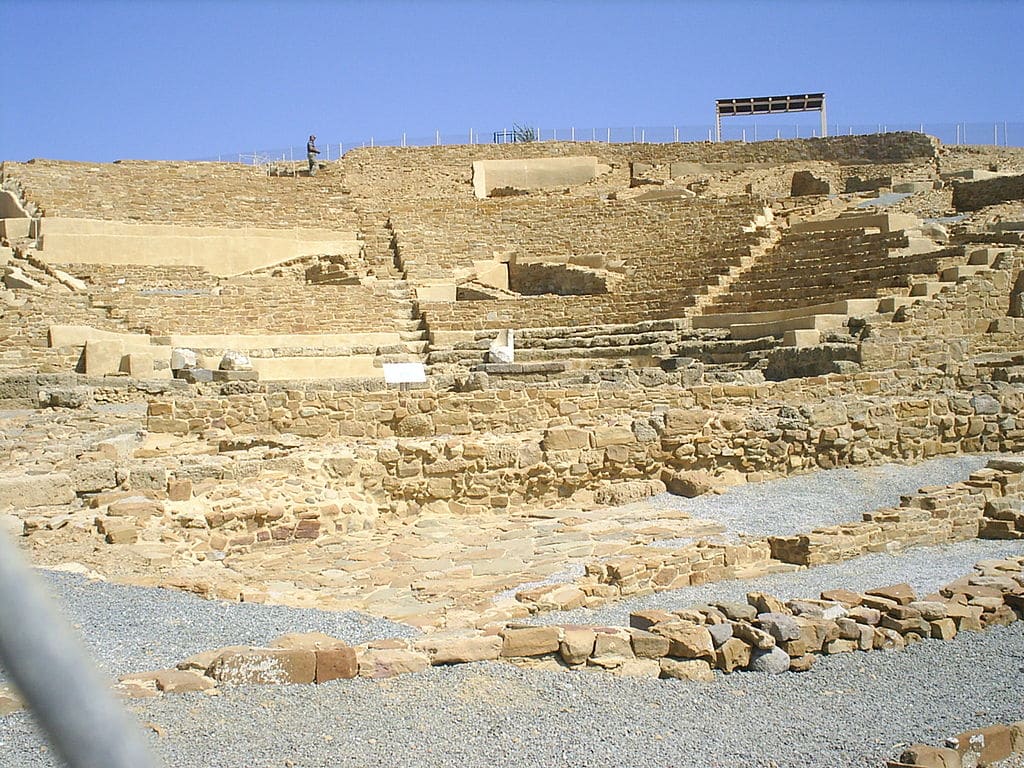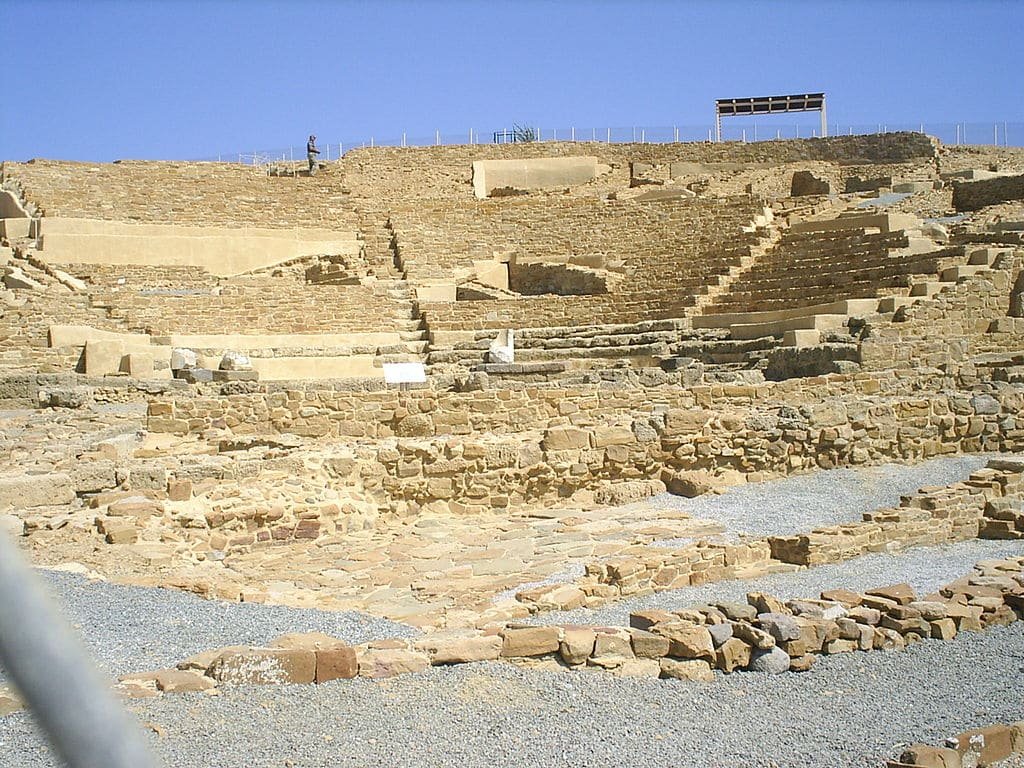
The Ancient Theatre of Hephaistia on the island of Limnos (Lemnos), Greece, is a remarkable testament to the rich cultural heritage of the region.
Situated in the ancient city of Hephaistia, the theatre dates back to the Hellenistic period, placing its construction between the late 5th and early 4th centuries BCE. This makes it one of the oldest theaters in the Greek world.
The theater, which opened to the public after restoration in 2010, is carved into a natural hillside, showcasing the ingenuity of ancient Greek architects and engineers. Its design incorporates a circular orchestra, a theatron (seating area) divided into three distinct sections, and a skene (stage building).
The theater served as a center for dramatic performances, musical events, and public gatherings. It played a vital role in the social and cultural life of Hephaistia, fostering a sense of community and civic pride.
Hephaistia on Limnos, Greece was named after the god Hephaestus
Hephaistia was named after the god Hephaestus, who, according to Greek mythology, had his forge on the island due to its volcanic origins. The island was considered sacred to the god of fire, metalworking, and craftsmanship. The city was an important urban center during the classical, Hellenistic, and Roman periods.
According to the historian Herodotus, the cities of the island of Lemnos, Hephaestia and Myrina, were inhabited by Pelasgians. These Pelasgians had promised to return the island to the Athenians if on any occasion Athenian ships, pushed by the north winds, managed to arrive in less than nine days from Athens to the island.
Many years later, the Athenians under Miltiades the Younger made the crossing in eight days. The Pelasgian inhabitants of Hephaestia left the island but those of Myrina resisted and were besieged until they surrendered, around the year 500 BCE.
The town was recorded by later writers, including Pliny the Elder, Ptolemy, and Stephanus of Byzantium.
Rare artifacts discovered at the necropolis
Excavations revealed a large sanctuary dedicated to a female deity, potentially the Great Goddess of a matriarchal civilization on Lemnos. The sanctuary was unfortunately destroyed by the Persians in 511 BCE. Remnants of rectangular buildings on two levels and a room with benches have been unearthed, along with fragments of a cult statue.
The site also holds the ruins of a large palace, baths, and a cemetery dating back to the 8th and 7th centuries BCE.
Excavations at the cemetery (necropolis) revealed bronze objects, pots, and over 130 ossuaries. The ossuaries contained distinctly male and female funeral ornaments. Male ossuaries contained knives and axes whereas female ossuaries contained earrings, bronze pins, necklaces, gold diadems, and bracelets.
The decorations on some of the gold objects contained spirals of Mycenaean origin but had no Geometric forms. According to their ornamentation, the pots discovered at the site were from the Geometric period. However, the pots also preserved spirals indicative of Mycenaean art. The results of the excavations indicate that the Early Iron Age inhabitants of Lemnos could be a remnant of a Mycenaean population.
Related: The Complete Guide to the Greek Island Paradise of Lemnos


